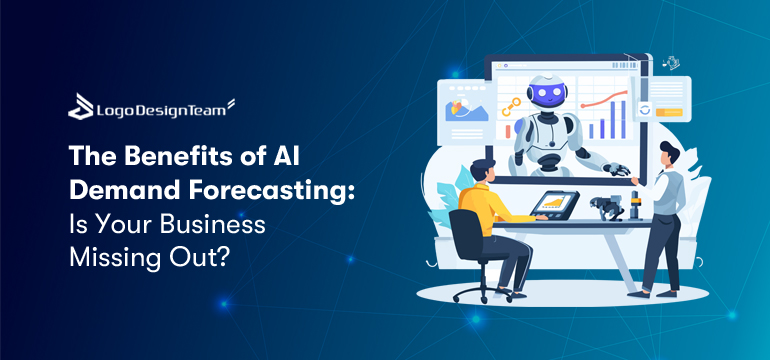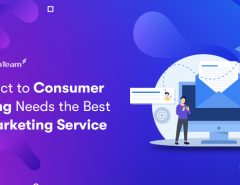Demand planning is an important process in almost every industry since, without planning, it’s difficult to assess consumer demand for your business’s goods and services. You may end up stuck with too much or too little inventory, neither of which is good for your organization.
While you and your team can hunker down with sheets of data organized into graphs and pie charts, there’s an easier way. AI can make demand planning a simple process. If you’re wondering about the other AI demand forecasting benefits of businesses, here’s a look at some of the advantages.
Key Benefits of AI Demand Planning
Artificial intelligence is here to stay and it’s already a part of our lives. Chatbots on websites are powered by AI. Even Google is testing out AI responses on its search results page.
Yes, there are times when AI gets it wrong since the technology is still evolving, but have you ever wondered how AI can help with your business decisions? To give you an idea of how AI can help your business, here’s a look at some of the benefits you get when you use artificial intelligence in demand planning.
Save Time and Reduce Frustration
When you’re trying to put together forecasts for the upcoming quarter, you typically start the process several weeks in advance. There’s usually a ton of data to pour over, and this is after it’s been organized.
Sometimes, even visual aids aren’t enough to make sense of some of the information. You don’t want to make the wrong decision, it can have disastrous results on your organization’s bottom line.
You can eliminate this hassle and save time by using artificial intelligence. Your AI program takes care of everything from analyzing the data to organizing it in easy-to-understand formats. Instead of spending weeks, it only takes AI a few minutes.
You’ll have an accurate demand forecast so you know what to stock up on, along with what you probably aren’t going to need.
Fast Response to Changing Situations
Things rarely stay the same in the business world. What was on trend yesterday may be out of style today, and this doesn’t only refer to fashion but pretty much every other type of goods or services. Changes not only occur because of consumer whims, other events can also affect demand.
A good example is the recent global pandemic we experienced. With most industries temporarily shut down for in-person business, online sites typically saw a significant boost in traffic and sales.
While AI can’t predict the next pandemic or trends related to unforeseen weather events, it can help forecast changes in demand as they occur. Doing so allows you to promptly adjust your demand strategies to meet the changing market.
You may even have an advantage over your competitors by being able to meet consumers’ rapidly changing needs.
Improve Your Ability to Make Decisions
Your AI model can do more than predict future market demand by analyzing past data. The tool can also identify fluctuations in consumer behavior at the early stages. Some models can even offer suggestions on courses of action to help you take advantage of the changes.
With the right AI model, you have the information you need to make the right decision for your business. Maybe you need to increase your supply order, alter it, or reduce the amount of incoming products.
Apply Internal and External Data
You’re probably already using internal data to forecast demand, but what about your external information? A good AI model can identify relationships between your business’s internal and external data so you get a clearer picture of the predicted future demand.
You can take advantage of data beyond what’s popular one season to the next. With data that can include economic and price indexes, you have a better idea of what’s going to be hot this quarter and what you’re probably not going to need to restock.
Improve Your Relationship with Your Supply Chain Vendors
Your supply chain is an integral part of your business. Without your vendors, it’s difficult to keep your shelves stocked. If your business only provides services, vendors are probably still crucial. Your supply chain partners ensure you have everything you need to supply the services whether it’s pool cleaning or keeping lawns free of weeds.
Using AI, you can more accurately predict what you need from your supply chain partners so everyone can plan more efficiently. You’re also reducing the chances of changing an order once it’s placed and this also makes vendors happy.
Spend Less Time on Data Science
Unless data science is your thing, it’s something no one really enjoys spending time on. Yes, data science is the best way of accurately forecasting demand, but it’s often time-consuming and frustrating.
Oh, and guess what? AI demand forecasting takes care of data science so you have time to focus on other business tasks. This also applies to your staff. Instead of pouring through data, they can focus on tasks they enjoy.
Not only are you getting more accurate results from AI, but eliminating the need for manual data science may even boost employee morale. After all, it’s hard to love a job when you don’t like the given task.
Choosing an AI Demand Forecasting Model for Your Business
When you’re ready to implement AI demand forecasting, you’re going to need to choose a model. Not all AI models are the same and this can affect how well it integrates into your business.
You can go with a machine-learning model, which is usually best if you have a wide range of products flying off the shelves. The model looks for buying patterns so you always have what consumers want in stock.
If you’re more focused on seasonal products, you may want to go with a time series AI model. If you’re selling products with a low weekly volume but the items are moving steadily, an AI model using historical averages may be a good fit.
While choosing the right AI model can be a little consuming, once it’s integrated into your system it’s hard to ignore the benefits.




